The ABC of places in San Marquino (NUSM), Lima
Hello everyone! I hope that you are all well. Today, I want to tell you about my National University of San Marcos, and, if you’re a San Marquino and you haven’t lived these experiences or been to these places, you’re no of the “Dean University of the Americas”, founded on the 12th of May, 1551!
As I have studied for five long years in this incredible university, I felt a sensation of nostalgia, and a need to express this information so that it can stay on this page and be useful for you during your time at NUSM, and also for me to remember such good experiences in this university that saw me grow, and where I was able to educate and enjoy myself to the max. I will tell you that I had to apply four times to be accepted into San Marco, and not even the third time that I applied did I stop my plans to be accepted into this university that had shown me so many things.
Dear friends, these are the activities and sites within the university that every good San Marquino has to go to or do sometime in their life, and today I would like to share them with each one of you.
1. “El burro” San Marquino:
What is this? “El burro” is the bus that goes around the whole university and has different stations in the student city of San Marquino, the “burros” are a sky-blue colour and you have to take them from different points across the university if you don’t want to walk, the “burro” is free and it can also take you to Grau Avenue for those that study in San Fernando. It is not known for sure why it is called “Burro”, but apparently the reason is that when you get off the bus, you have to at least say thank you to the driver and not be ‘burro’ (an ass). Thanks before everything, guys!
The “burro” was one of the first things I learned to use during my time at San Marcos, especially when I wanted to go to the Central Library as the journey by foot is around fifteen minutes, and sometimes it was better to wait for the “burro” at one of the stops to be able to get to the library. I forgot to mention to you that I studied tourism administration and so, for me, the nearest ‘gate’ to get the bus from the faculty was Gate Three, which was near to the Arts Pavilion and the Economics and Social Sciences Pavilion.
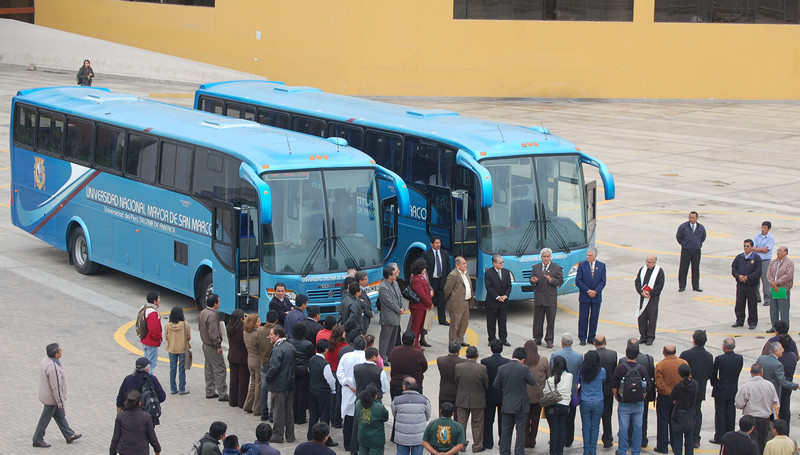
The buses generally arrive every fifteen minutes to the stations within the university, there are also fixed timetables for the mornings, afternoons and evenings to go to Grau Avenue, where the Faculty of Medicine is, and other routes such as the ones from North Lima. In my case, I never took it to leave the university, I only tried once but there was a very long queue of students! So, I had to give up on my plans to get to the centre of Lima for free.
2. The University Dining Hall and free food:
The site is a place of quality Peruvian gastronomy :) They offer delicious soup, a main course and a dessert, you are going to see a very long line with lots of students from the front door of the dining hall to the football pitches, and sometimes to the Faculty of Chemistry.
The queue takes at least and hour and a half as there are many groups of friends that queue to eat for free at the university, normally they are the freshers (the recently enrolled) and those that also have a break whilst they wait in the line, talking among friends or doing some work in groups. Furthermore, I’m going to take this opportunity to tell you that, normally, male freshers shave their heads as a sign of celebration at having been accepted into a university but, in my case, I resisted and didn’t cut my hair :)
This queue seems as though it will never end but, believe me, you have to do it and live the experience of how the serve the food, especially during special periods, such as in December when there is a specific date when they prepare rotisserie chicken, and people camp in tents to be able to eat on these days. Furthermore, if you live near to the university and you’re one of the ones that get up early, they serve a free breakfast in the Dining Hall, in this case it’s normally the people that live in the university residence or those who could rent a room in front of the university as it can be quite complicated for those who want to arrive early at the university due to the traffic in Lima.
3. The Central Library:
The library in San Marcos is one of the largest in Peru, it’s yellow in colour and looks like a boat found in the same square where there is a rectory where they mainly host dance championships. The central library has different floors and you can study there or download thesis information for your projects.
If you want to work as a stockist, you could do so here, I worked part-time in the library when I was studying and they paid me next to nothing (just 10 soles a day) but I was lucky enough to meet lots of people from different faculties and make very good friends. The worst thing that can happen to you is an earthquake, like the one that happened to me in 2007 when I was in the library, and everyone hurried through the rooms to leave. I was in the middle of a deposit between books.
Here is a photo of me during the time of the year (old), with my beautiful library in the background :) to enter the library, you only need your university card and there is generally always security at the entrance to verify it, also when you enter the lecture rooms you cannot go in with your backpack, so you have to leave it at the front desk and you have to take our your books and everything you need in order to study.
The library tables are almost square and fit six to eight people, and clearly this is not a place for scandals!

I was lucky to work as a stockist at the library of my university where I had a lot of good moments and could meet people from different faculties, despite not being paid a lot, the satisfaction of being there was great and I always remember it with fondness, as well as having been a witness to the strikes that they held against low pay, as it was in front of the rectory as I mentioned to you at the start :)
4. The San Marquino Stadium
The stadium in San Marcos is one of the biggest in Lima, and they also host concerts with artists and dance festivals here. I didn’t go a lot but I went at least a few times to be a good San Marquino.
Furthermore, what surprised me about the San Marquino stadium is that it’s the second largest in Peru (the largest is the Monumental) and has the capacity for 70 thousand people, but for evacuation issues it only accommodates for a maximum of 24 thousand people.
The stadium, just like the university, is built on what was the Maranga culture in Lima and has various entrances, but the closest is the one found in Amézaga avenue. You could say that the stadium is almost next to the university clinic and behind that you would arrive at the Computing Campus and the university residence for girls, it’s a route that I walked almost daily, when I couldn’t take the San Marquino “burro”.
If you study in the Faculty of Administration, you can see the stadium from the windows of the rooms and also, the sound reaches there of the concerts, when they have them, and the hordes of people making themselves known with their shouts, and in summer I remember being able to see the San Lorenzo Island, which is the largest island of Peru, and it is located in the Callao port.
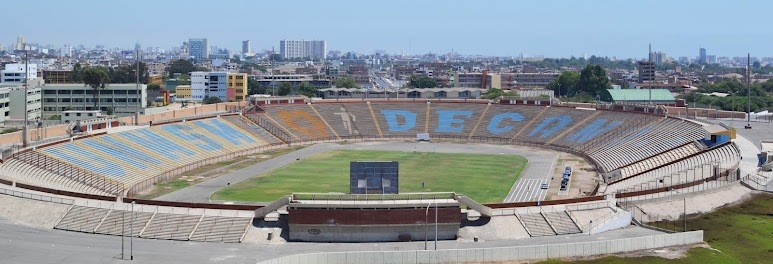
5. Spaces for dancing and drinking:
This place is a complicated recreational space haha, let’s say that it’s a place where you can go to drink a beer or dance with friends for student prices, in my time there was: Acuario, La Tripa and Los Portales. It would be a shame to not go here with your friends for a birthday or for the end of an exam season, any excuse is valid!
In my time, everyone danced reggaeton, the cumbia and salsa in these places, the truth is that I don’t know how they will look now, but for reference they were one Venezuela Avenue.
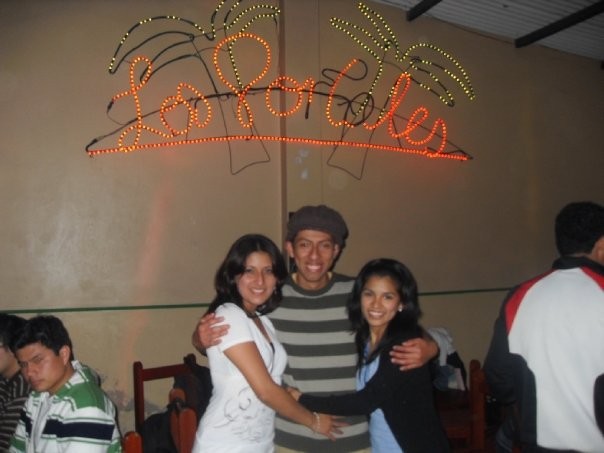
Los Portales and Acuario were the most frequented and La Tripa (intestine) I remember was called that for being the narrowest place, normally what people consumed most there was beer, and each one was next to the other, it was common to see lots of groups of students at round tables dancing within the facilities and bringing a birthday cake to celebrate, as well as seeing a drunk that cannot deal with their life anymore after drinking so much alcohol, one of the first songs that I danced to there I remember being "la cocotera" haha and, as I didn’t know how to dance I had to learn by force. Also popular was reggaetón such as "bailame" by Trebol Clan and, also popular in these times was Grupo Cinco "el embrujo" and salsas, but these I didn’t dance much because as I didn’t dance them I didn’t know how to dance the salsa like my fellow San Marcos students! :)
As you guys will already know, you will go to the San Marquino spaces, although I also remember that, already in my last exam seasons, I started to go out to other premises by Gate Three in San Marcos, due to it also having bars and places to play pool.
6. Dance festivals and championships:
For those who haven’t gone to a dance festival in San Marquino being in the university, the festivals are held when it’s the anniversary of the university or when it’s the anniversary of a faculty.
It’s also a good opportunity to relax with your friends and dance until sundown. I don’t know if they’re still popular now, but I think they are.

The festivals are held in the sports fields of the university and they are scheduled for the night and usually last until the next day, here you can see a video of a San Marquino festival click here. They are festivals with live music where salsa music is usually put on and people start to dance in groups and others stay until the end, at least one in a lifetime!
Additionally, they also have sports championships from the morning onwards and there are competitions and things of all kinds.
7. Huaca San Marcos:
For those who aren’t from Peru, a “huaca” is an archaeological centre and the San Marquinos are lucky enough to have a “huaca” in our university, to be more accurate the same university was constructed over what was the remains of the Maranga culture in Lima. So, if you have friends in archaeology, you can go to these sites and see the university from the top of the “huaca”.
Here I am with one of my best friends, Lauris :) at the top of the faculty, and from here you can see the central library and the green part that you can see on the left are the botanical gardens.
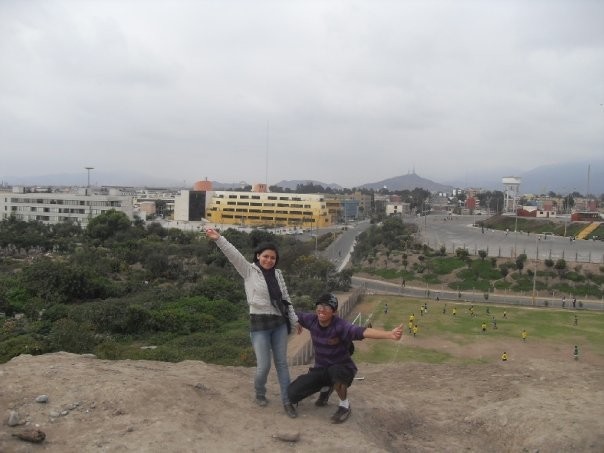
8. The famous San Marquino strikes:
Many Peruvians think that San Marcos is a very litigious university haha the students often go to march every time there is an injustice in society, in my time there was a problem with the bypass that the municipality of Lima wanted to build over a university site, and many students protested and others, like myself, who had a class had to pay a fine. I remember that tear gas bombs were thrown into the university city from Gate Three and I also saw how stones were thrown between the police and the strikers. Fortunately, with the strike and everything I can certify that I never lost even one semester.
The strikes are organised even by some San Marquino authorities when they wanted to walk to protest from the university city to Abancay Avenue in the centre of Lima. In general, every faculty in San Marcos is known for something and they say that the ones that protest the most are the social sciences and humanities, so it’s fair to say that my faculty, which is of administrative sciences, is found in the middle of them and was considered yellow because it wasn’t often linked to strikes.
9. The annual competitions of folkloric dances:
Every respectful San Marquino had to have seen the competition between dance faculties that is held in the central pavilion, I went to see my faculty dance and to shout like crazy for my faculty and to stick out my chest with pride for my friends that danced. :)
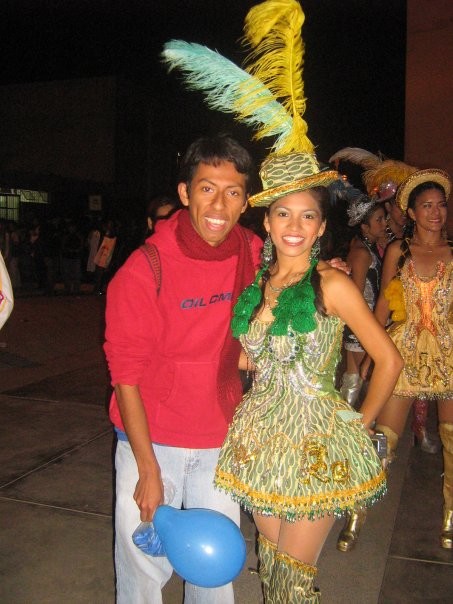
They also host traditional bar competitions and you have to shout like crazy during the spectacles and support your team, this is one of the dates that I liked the most because my fellow students prepare with lots of anticipation to be able to give a good presentation on stage, and the dances are ones with special and reinforced movements that are a good excuse to share unforgettable moments with friends in your faculty.
10. The Casona San Marcos in the university park:
This is the cultural centre of the university and is in the centre of Lima inside what is known as the university park. It’s also a museum and it’s full of history, for throughout its history it was the headquarters of a Jesuit novitiate, of the Convictorio de San Carlo and, later, of the San Marcos University.
I love this place and I would always go with friends foreign to Lima, bringing them here so that they could get to know the history of San Marcos, which is the oldest university of the continent. I have another post where I specifically write about the Casona and its background that enchants everyone that can visit it here. It has recently been remodelled with new lighting, making the university park one more attraction in the city of Lima.
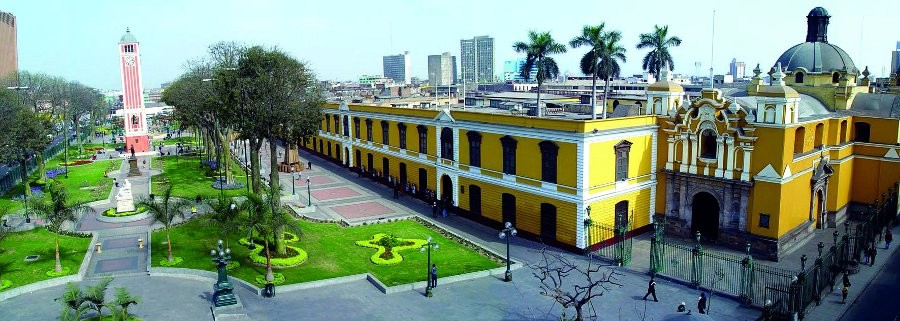
La Casona de San Marcos has different courtyards such as those of Law, Art, Sciences, Jasmine and children within it also operate dance venues such as the San Marcos ballet and the folkloric dance school. To get here you can take the Abancay Avenue as a reference point.
11. Get together in the Arts woods or eucalyptus woods:
One of the meeting points to do group work, or simply to pass the time, waiting for your group to get together, is the eucalyptus woods in front of the Faculty of Administrative Sciences. In the corners there are round tables made of wood with seats that are logs where you can sit down and do your assignments during the mornings and afternoons only, as during the night this are is a bit dark as there are no lights. For the best reference point, these woods can be found by Gate Three in the university, it was the place that I always passed to then enter my faculty where you can also have last minute meetings :) and even host an end-of-year gift exchange :)
Here I will share with you one of the photos that I could rescue from my trunk of memories with my friend Iveth, doing some faculty work from those times.
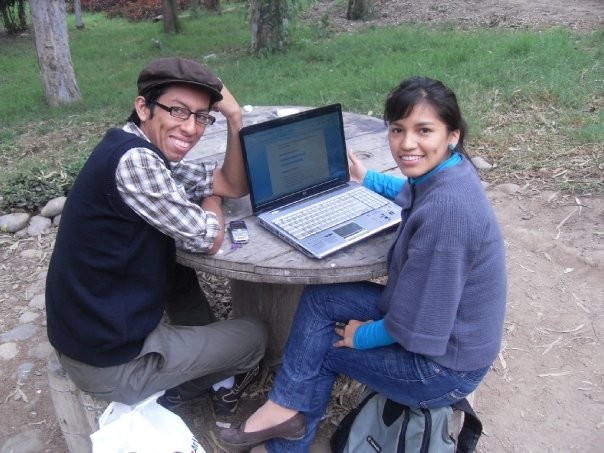
12. The Law hills:
The pictures speak for themselves, especially when you study during the night and you want to take a break :)
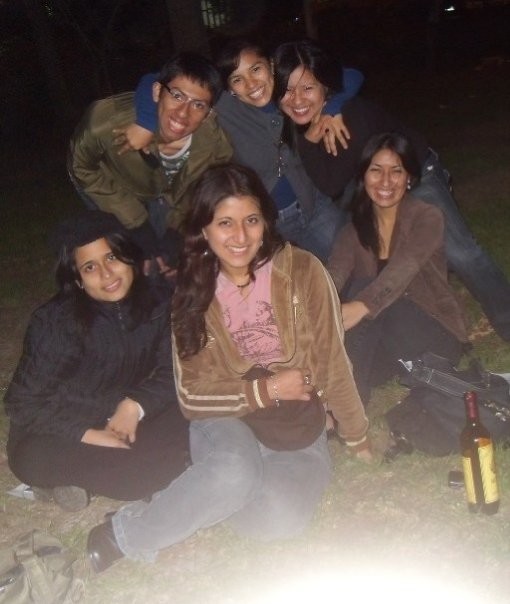
The Law hills are in front of the Faculty of Law, and here there is a kind of accumulated land that has become like a hill where there are trees, and a hill where people sit in groups, it’s a good opportunity to be with friends.
13. The San Marcos Shield at the Venezuela Avenue entrance:
Take a photo with the University Shield that you will find near the Faculty of Industrial Engineering, here, for example, I am with my great friend Karenin during one of the many afternoons of conversation.
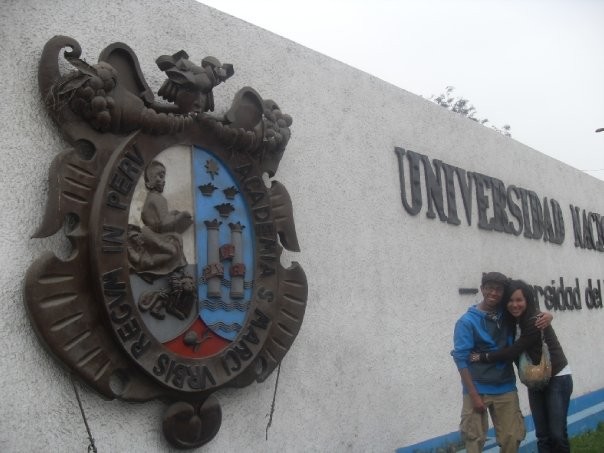
The San Marcos Shield represents Saint Mark, the name was chosen by a draw that was done in a small box, and so came about the name of the oldest university of the American continent. Also, on the right part there are three crowns that represent the city of Lima as my city was known as the three times crowned villa to be founded on the 18th of January in 1535, near the descent of the three wise kings, because of this Lima was also known as “The City of Kings”. Below the three crowns are two towers that represent the kings of Spain, since San Marcos was created by royal cedula by King Carlos V of Spain because this city was the most important in this part of the world.
This is everything that I can bring to mind at the moment. There are very fun and enriching experiences, studying in San Marcos has filled me with pride and my heart beats a thousand miles a minute every time I see the history of my university, the good friends I met and everything I have been able to learn in the oldest university in America in these five years that were so worth it.
San Marcos is, without doubt, one of the most prestigious universities in Peru for being a cradle for notable characters that studied in my university, and is a focus of debate when, every year, thousands of students attempt to be accepted in the university which is considered to have one pf the hardest entrance exams in Peru along with the National University of Engineering, also known as the UNI (in Spanish).
And finally, dear readers, here I leave you a photo with my group of friends of five years at university in the Faculty of Administrative Sciences. Tourism Base 2005: Mariluz, Diana, Iveth, Liz, Cinthia y Juan.
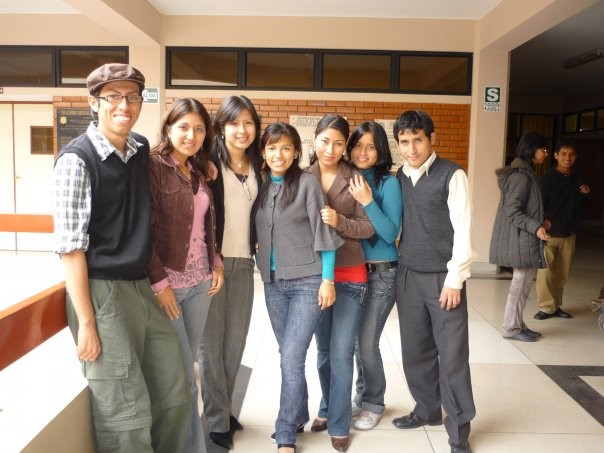
Bonustrack:
If you are in the Faculty of Administrative Sciences, you have to take a photo with the front of the building at least once in your life!
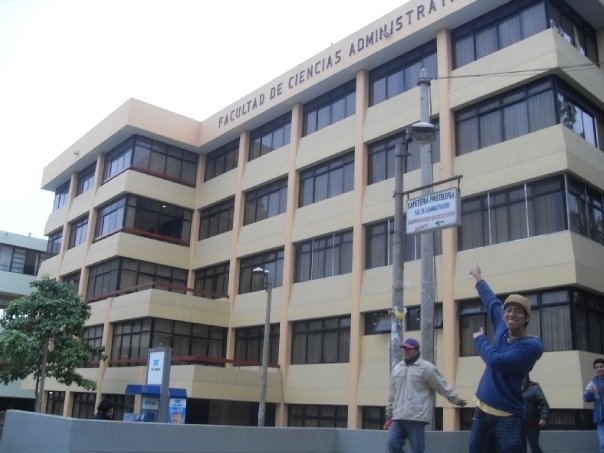
The Faculty of Administrative Sciences has within its premises three schools of Administration for Business Studies, International Business Studies and Tourism Administration Studies. Recently, the faculty has received international accreditation that has transformed it into a new competitive focus for the Peruvian market.
Within the faculty, there are only four floors and a basement where I was able to experience enriching life experiences, and it is something that I am never going to forget.
Dear readers, of you are of the Faculty of Administrative Sciences, and you have never seen the “Bolche” or the “Chorri”, what are you waiting for! Long live San Marcos!
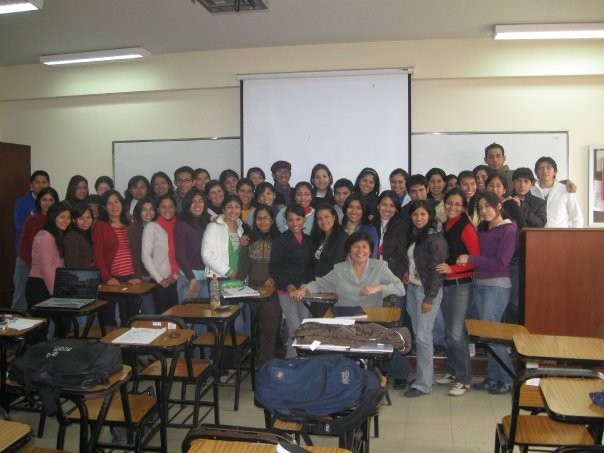
Many thanks for Reading this publication.
Photo gallery
Content available in other languages
Share your Erasmus Experience in National Major San Marcos University!
If you know National Major San Marcos University as native, traveler or as exchange student... share your opinion on National Major San Marcos University! Rate different characteristics and share your experience.
Add experience →


























Comments (0 comments)